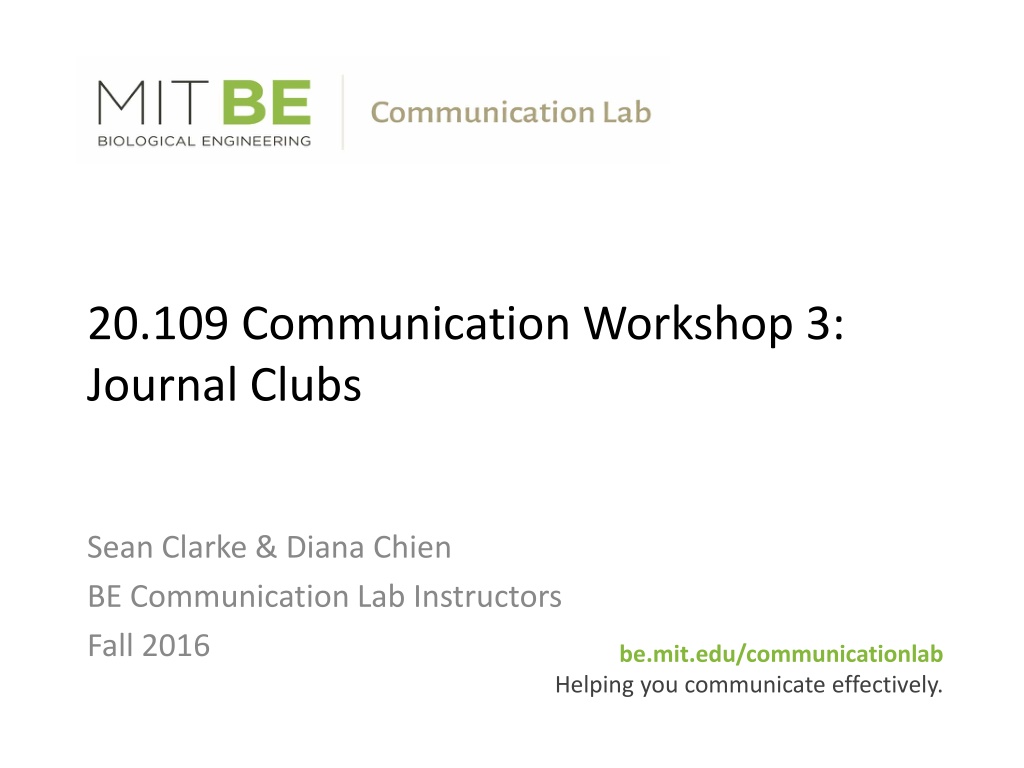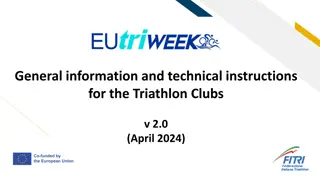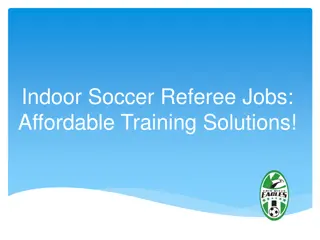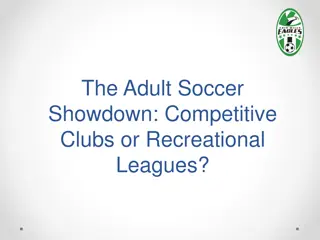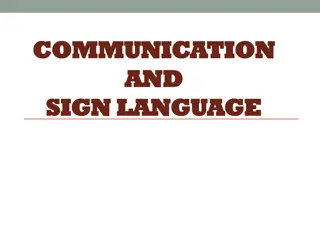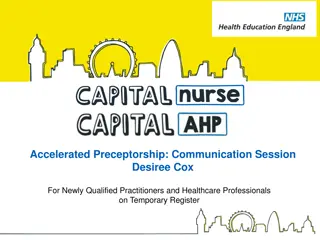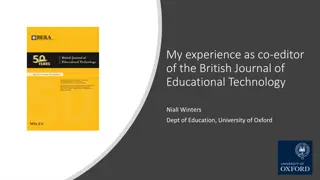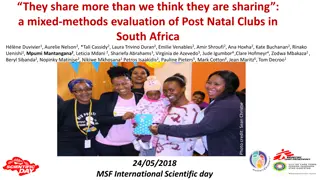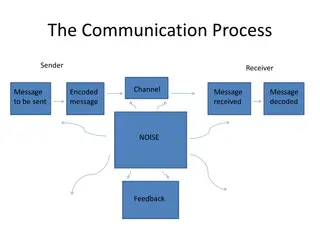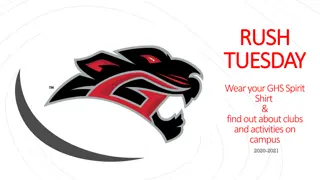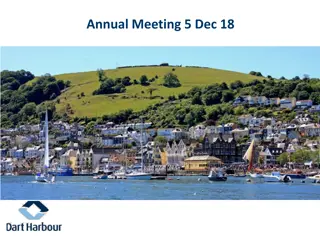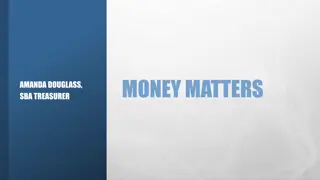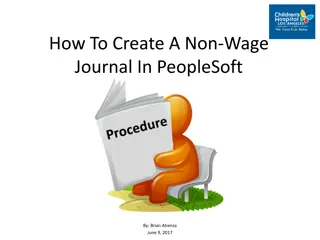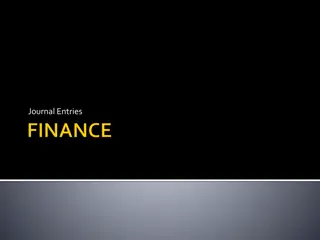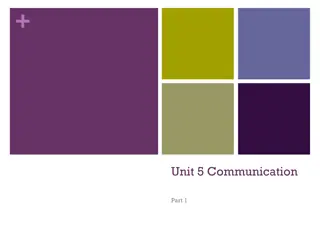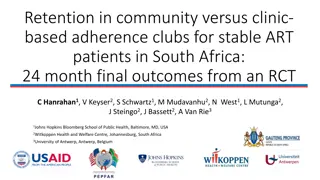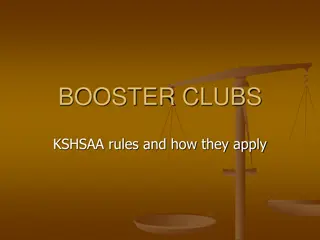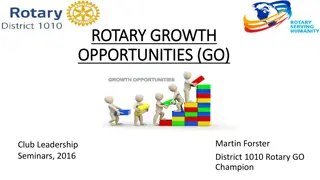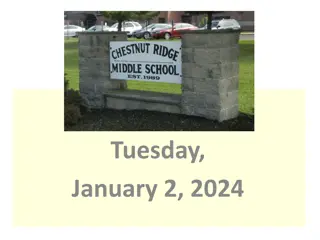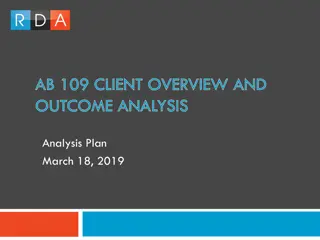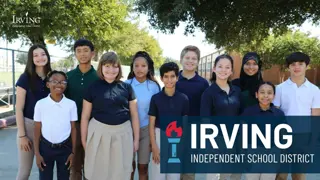20.109 Communication Workshop 3: Journal Clubs
Develop essential communication skills for successful presentations, journal clubs, and scientific discussions. Learn to craft engaging stories, identify key scientific components, design impactful slides, and deliver compelling presentations within time constraints. Avoid common pitfalls and stay updated on professional activities to improve communication proficiency.
Uploaded on Feb 24, 2025 | 0 Views
Download Presentation

Please find below an Image/Link to download the presentation.
The content on the website is provided AS IS for your information and personal use only. It may not be sold, licensed, or shared on other websites without obtaining consent from the author.If you encounter any issues during the download, it is possible that the publisher has removed the file from their server.
You are allowed to download the files provided on this website for personal or commercial use, subject to the condition that they are used lawfully. All files are the property of their respective owners.
The content on the website is provided AS IS for your information and personal use only. It may not be sold, licensed, or shared on other websites without obtaining consent from the author.
E N D
Presentation Transcript
20.109 Communication Workshop 3: Journal Clubs Sean Clarke & Diana Chien BE Communication Lab Instructors Fall 2016 be.mit.edu/communicationlab Helping you communicate effectively.
Journal clubs build helpful skills (finding and presenting important parts of scientific work) Helps you communicate YOUR work better Required professional activity Stay up-to-date Learn collaboratively
Avoid common 20.109 pitfalls DON T DO Start so late you don t have time to digest the paper Give yourself time to read the paper 2-3 times Be exhaustive List experiments chronologically Be selective Tell a story Go outside the 9.5-10.5 minute time Practice until you know you can hit the time limit Forget to cite the paper Include citation in your title slide Say we did this The authors did this Use illegible labels Use 20pt font Make your own figure labels if helpful Use legible font colors
Skills well discuss today 1. Crafting a story 2. Identifying key parts of a scientific work 3. Designing effective slides 4. Presenting well
There is additional help Practice your presentation with a Communication Fellow http://be.mit.edu/becommunicationlab Susan McConnell (Stanford) Designing effective scientific presentations https://youtu.be/Hp7Id3Yb9XQ
1. Craft a story Excellent students tell a story. -Noreen
You only have 10 minutes for your journal club presentation. What content will you include?
Chronology confuses us The authors wanted to engineer a calcium sensor s binding sensitivity. They ligated DNA into a plasmid, then they transformed it into cells, and then they looked at fluorescence data. But WHY?
Storytelling conveys logic & motivation The authors wanted to engineer a calcium sensor s binding sensitivity. To change the binding site, they did site- directed mutagenesis, then they expressed the mutant protein in cells, and then they assessed its binding properties with a fluorescent assay.
Tell us a story Identify the question/message Include only essential results Connect all results back to the question/message Use titles & transitions that explain logic & motivation
2. Identifying the key parts of a scientific work
Activity 1: What would you present from Otoupal, et al.? Which 2-3 figures (or parts of figures) would you choose to present? What is their significance to the main question?
Slide design: use the same principles as figure design Titles = take-home messages Show minimum essential data Avoid clutter Simplify & break up figures to avoid overwhelming your audience.
Example: Converting a paper figure to a presentation figure Susan McConnell (Stanford) Designing effective scientific presentations https://youtu.be/Hp7Id3Yb9XQ?t=1150
Skills you should demonstrate: Titles = take-home messages Show minimal essential data Remove clutter, improve clarity Separate/mask panels Add/move/remove labels Effective redundancy: align visual, written, & oral What would help my audience understand this faster?
Titles = take-home messages DON T DO Overly general heading Only descriptive Take-home message; so what? Methods EMK-1 Knockdown EMK1/Par1 was knocked down in MDCK (kidney) cells using siRNA Results Ca-switch MDCK cells form a lumen after changing extracellular [Ca+2] Mitochondrial ROS induction in cell lines Mitochondrial ROS induction is decreased in adk- cells Comparison of primer specificity Primer 1 is better than Primer 2 at differentiating closely-related HIV strains
Avoid light or bright font colors. Am I legible? Am I legible? Am I legible? Am I legible? Am I legible? Am I legible?
Activity 2: Practice adapting a figure Pick one figure and break it down as you would for a slide. What would you show? What text would you add? Title = take-home message Show minimum essential data Remove clutter, improve clarity Separate/mask panels Add/move/remove labels Effective redundancy: align visual, written, & oral What would help my audience understand this faster?
Additional help Practice your presentation with a Communication Fellow http://be.mit.edu/becommunicationlab Susan McConnell (Stanford), Designing effective scientific presentations https://youtu.be/Hp7Id3Yb9XQ
